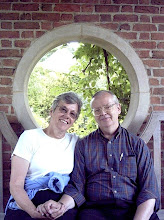In Lost Horizon, a group of westerners find themselves captured by Lamas in the mountains of Tibet. Here the drifter of the group, Conway, swaps thoughts with a Tibetan holy man.
“Slackers?” queried Chang. His knowledge of English was extremely good, but sometimes a colloquialism proved unfamiliar.
"Slacker,” explained Conway, “is a slang word meaning a lazy fellow, a good-for-nothing. I wasn’t, of course, using it seriously.”
Chang bowed his thanks for this information. He took a keen interest in languages, and liked to weigh a new word philosophically. “It is significant,” he said after a pause, “that the English regard slackness as a vice. We, on the other hand, should vastly prefer it to tension. Is there not too much tension in the world at present, and might it not be better if more people were slackers?”
“I’m inclined to agree with you,” Conway answered with solemn amusement.
— James Hilton, from Lost Horizon (1933), quoted in The Idler’s Companion edited by Hodgkinson and De Abaitva, pp. 74-75.
The fact that scientific method seems to reduce God to something like an ethical code may throw some light on the nature of scientific method; I doubt if it throws much light on the nature of God.
— Sir Arthur Eddington (1882-1944), British theoretical Astronomer, The Mind of God & Other Musings: The Wisdom of Science, in Shirley Jones (ed.), p. 48.
One equation involves Planck’s constant (h), the velocity of light (c), and the electronic charge (e). The combination hc/e happens to equal 137…. This number connects quantum theory (h), relativity (c), and electricity (e). Therefore, it holds a special significance for physicists. When I mentioned this number — 137 — to [Gershom] Scholem, his eyes popped out…. He told me that in Hebrew each letter of the alphabet has a numerical equivalent and that the Cabala assigned a deep symbolic significance to the sums of such numbers in a given word. The number corresponding to the word “cabala” happens to be 137. Could there be a connection between Jewish mysticism and theoretical physics?
— Victor Weiskopf (b. 1908), Austrian-American Physicist, quoted in Ibid., pp. 48-49.
Quarks are located in a physical “somewhere” between matter and spirit…. The “inconceivable concept” of the electron as a “wave of matter” alone touches upon a metaphysical dimension…. These “waves of matter” are more than shape; they are metashape, shapes to which we can no longer attribute a substantial content — only a spiritual one.
— Gerhard Staguhn (b. 1952), U.S. Physicist, quoted in Ibid., p. 49.
Science shows us that the visible world is neither matter nor spirit; the visible world is the invisible organization of energy.
— Heinz R. Pagels (b. 1939), U.S. Physicist, quoted in Ibid., p. 66.
The world of psychical phenomena appears to me to be as much a part of “Nature” as the world of physical phenomena; and I am unable to perceive any justification for cutting the Universe into two halves, one natural and one supernatural.
— Thomas Huxley (1825-1895), British Biologist, quoted in Ibid., p. 67.
To a person uninstructed in natural history, his country or seaside stroll is a walk through a gallery filled with wonderful works of art, nine-tenths of which have their faces turned to the wall.
— Thomas Huxley (1825-1895), British Biologist, quoted in Ibid., p. 67.
Subscribe to:
Post Comments (Atom)

No comments:
Post a Comment